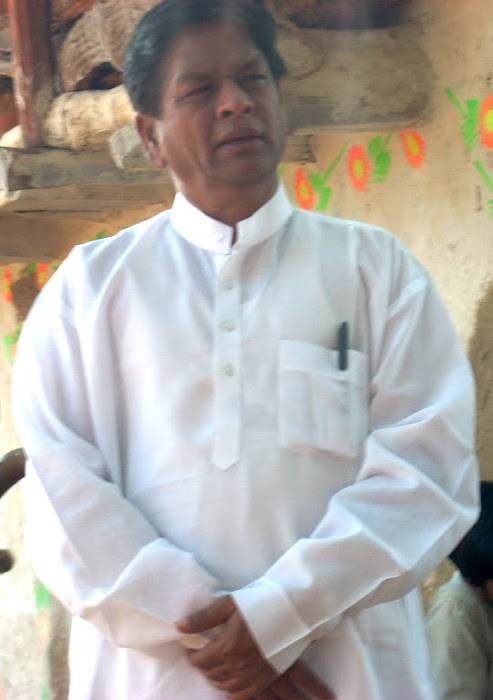Soil
Soil Grades:
Above an impervious layer of rock that is found at depths of 6 to 15 metres,
several kinds and grades of soil are found across Bundelkhand. Broadly, the
soils fall into two categories: red soils and black soils. Across Bundelkhand,
soils of both categories have poor organic content. The second variety of black
soil, called mar, is what is generally called black cotton soil. It has high
clay content and is prone to water logging. The soil has relatively high
organic matter content, and hence can be cropped without use of fertilizers. It
is found in parts of the districts of Jalaun (Konch tehsil), Hamirpur (Maudaha,
Rath tehsils),
Wastelands in Bundelkhand:
Roughly, a
total of over 11,000 sq km, or over a sixth of the area of Bundelkhand falls
under four broad categories of wasteland, according to estimates given in the Wasteland Atlas of India,
prepared by the Department of Land Resources, Government of India, on the basis
of satellite data.
The atlas
lists nearly 30 different kinds of wastelands found across the country. Among
these, wastelands found in Bundelkhand can be grouped as: land affected by
shallow, medium or deep gullies; wastelands with or without scrub in lowlands
or uplands; degraded notified forest lands and barren, rocky and totally
uncultivable land.
Wastelands
under main categories (2005)
|
District |
Total
wastelands in sq km (% of total land) |
Land
affected by gullies, in sq km |
Wastelands
with or without scrub, in sq km |
Degraded
notified forest land, in sq km |
Barren,
rocky land, in sq km |
|
|
851.59
(16.9%) |
117.88 |
537.62 |
148.9 |
36.95 |
|
Lalitpur |
478.96
(9.5%) |
|
288.09 |
84.38 |
104.3 |
|
Jalaun |
278.15
(6%) |
173.48 |
55.97 |
48.10 |
|
|
Hamirpur |
184.33
(4.5%) |
143.39 |
25.19 |
14.32 |
37.2 |
|
Mahoba |
156.14
(5%) |
11.01 |
119.9 |
22.32 |
2.23 |
|
Banda |
393.43
(8.4%) |
392.73 |
|
|
|
|
Chitrakoot
|
127.29
(4.3%) |
19.89 |
20.84 |
30.13 |
54.31 |
|
Datia |
606.91
(29.8%) |
173.44 |
249.44 |
126.54 |
18.49 |
|
Chhatarpur
|
4325.45
(49.8%) |
11.37 |
3611.21 |
661.07 |
|
|
Tikamgarh
|
1109.99
(22%) |
|
526.95 |
405.92 |
335.9 |
|
Panna |
997.87(14%)
|
22.59 |
412.52 |
540.65 |
159.06 |
|
Damoh |
1002.92
(13.7%) |
6.54 |
613.52 |
370.54 |
|
|
Sagar |
1201.29
(11.7%) |
|
605.17 |
587.93 |
6.01 |
Source: Wastelands Atlas of
Over half
the total wasteland of the region is wasteland with or without scrub; over half
this land is found in the Bundelkhand Intermediate sub-region, in Chhatarpur district. Half the
area of the district is wasteland. Around a quarter of the total wasteland is
degraded notified forest land, found mostly in Bundelkhand Upland (Chhatarpur,
Tikamgarh, Panna) and Sagar and Damoh plateaus.
Around a
tenth of the wasteland is land affected by gullies, found mostly in Bundelkhand
Plain; Datia and Banda districts are the most severely affected. While barren,
rocky land is a natural, fixed feature, land affected by gullies and ravines
and degraded forestland can be recovered. However, land affected by gullies and
ravines in Bundelkhand is increasing. Some efforts to recover gully land were
made in the 1950s and 1960s, but no major programme has been launched in the
recent past and various stages of gully formation are proceeding at an uncontrolled
rate.
At the
first stage, formation of shallow gullies, land can be recovered for
agriculture use. However, at the second and third stages, when medium and deep
gullies are formed, the land is practically lost forever. Every year, an
additional 0.5% of the total land in Bundelkhand Plain is the estimate to be
affected by gully formation.
A new form
of land degradation is growing rapidly in Bundelkhand - due to extensive
quarrying. The loss is most visible in Tikamgarh, where according to satellite
data used in the 2005 Wasteland
Atlas of India, some 20 sq km had already become a mining
wasteland. At the rate quarrying is progressing, one can expect similar loss in
Soil
Loss in Bundelkhand Plain
The
Bundelkhand Plain sub-region
in particular, Banda, Hamirpur and Datia districts are severely affected by
soil loss and suffer
from over-drainage due to a large number of rivers and streams. A number of
nalas scour of these watercourses, rendering a large amount of land worthless.
Land is cut away by fast-flowing water and flooding leads to loss of precious
topsoil.





